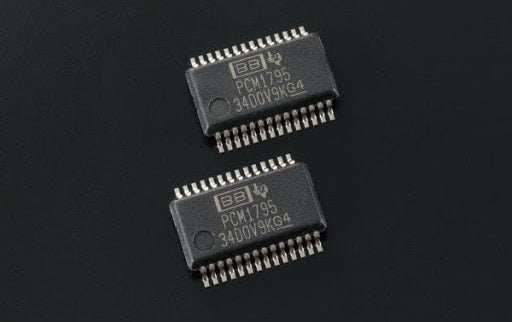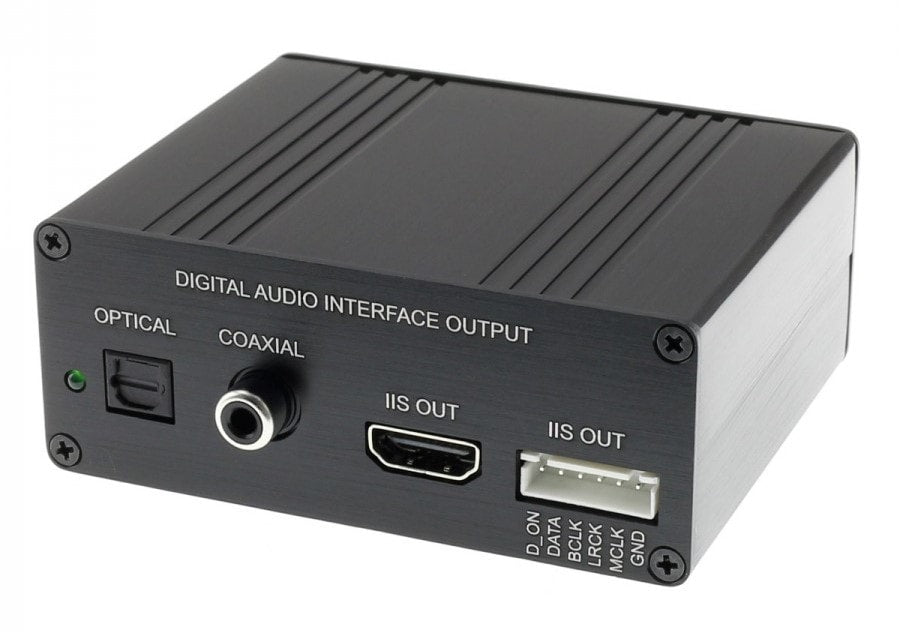I do intend to get back to the normal record review format of this column, but I felt compelled this go-around to continue talking about how my DSD-ripping experience has caused me to completely re-evaluate my approach to the playback of streaming music.
We live in a world where LPs seem to be going strong, but spinning digital discs are rapidly becoming obsolete. Most new computers for both personal and professional applications no longer include a CD- or DVD-ROM drive. The world seems to be passing this technology by – even the audio world – and a couple of years ago when my Oppo universal player stopped reading any type of disc, I was pretty much between a rock and a hard place. Oppo had ceased manufacturing the players, and there was very little out there in my comfort zone (under $1,000 USD) that would provide universal disc playback, including SACD and Blu-ray (BD). But most importantly – could another player provide stellar sound quality? I don’t mind buying used equipment, but when it comes to disc players, I’m less enthusiastic. I ended up getting a new Yamaha BDA-1060 ($600), which will play just about any type of digital disc. It seemed like the best combination of “audiophile” features and disc compatibility at a reasonable price.
But after two years of almost daily use, I’m still not completely convinced it’s giving me everything I want, especially in terms of overall sound quality. That criticism is mostly aimed at SACD and BD audio disc playback (I have a huge collection of SACDs, and a growing assortment of music-only Blu-ray discs). Their playback is not always particularly compelling. Even with available features on the Yamaha unit like Pure Direct mode (which bypasses any video circuitry in the playback chain) and CD Mode (which reduces the disc rotation speed by 30 percent, which improves laser read capability and also reduces vibrations; by the way the BDA-1060 weighs less than 10 pounds) it just doesn’t seem particularly robust. Especially when compared to the first and second generation Sony SACD units that once occupied my system, which were pretty much built like tanks but are probably now in a landfill somewhere.
 The Texas Instruments PCM1795 chipset is a utilitarian design.
The Texas Instruments PCM1795 chipset is a utilitarian design.
The aspect that I probably find most disconcerting about my current disc playback setup is the DAC complement of the BDA-1060, which includes a single Texas Instruments PCM1795 chipset shared by both channels. That chipset is not exactly the current state-of-the-art in audio playback, and the individual chips sell for a little over $3 each – not exactly what I’d call my current ideal for delivering audiophile-quality sound from any kind of disc, be it CD or SACD. Competent, yes, but ne plus ultra? Hardly.
I’ve previously mentioned that my digital music playback setup currently includes a dual-box server/streamer combo from Euphony Audio, with linear power supplies from PliXiR; my digital-to-analog converter is a very good-sounding and capable PS Audio GainCell DAC. Everything is wired to my home network, and I only need my tablet or Android phone to get playback started. It’s the most elegant setup I’ve ever had the pleasure to enjoy in my audio system, and provides a level of musicality and realism that just boggles me every time I take a listen. The PS Audio DAC utilizes an ESS Sabre 9018 DAC chipset; its level of quality far exceeds that of the Yamaha BDA-1060. When I occasionally listen to a CD, I always play back using a coax digital cable through the PS Audio GainCell DAC. Direct playback to my DAC, of course, is not possible for me with SACD and Blu-ray, and the main reason I was so keen to recently learn how to rip SACDs (see my article in Issue 135).
My assertion that direct-to-DAC playback of high-res discs is not possible isn’t entirely correct; I probably should have qualified that. PS Audio manufactures their own high-end transport and pays the licensing fees to Sony so that the SACD handshake works between their DirectStream series of disc players and DACs. So for a somewhat princely price, you’ll get native DSD output. But if you’re intent on maintaining a more budget-friendly yet audiophile-quality spinning digital disc setup, there are options, especially if you have a player that provides fairly noiseless and stable disc transport (another area in which I find the Yamaha lacking).
 A typical HDMI to I2S converter. There are lots of resellers online, and they all seem exactly alike, though I hear that's not the case.
A typical HDMI to I2S converter. There are lots of resellers online, and they all seem exactly alike, though I hear that's not the case.
The GeerFab D.BOB (Digital BreakOut Box) is one way to extract the high-resolution content from your media.
And there’s also a stand-alone box, the GeerFab D.BOB ($1K USD), which will allow you to stream the content of SACD or BD discs directly to your DAC– but there are limitations. Certain content can only be streamed via HDMI, and depending on the configuration of your player and DAC, compatibility issues may exist. DSD streaming is only possible via a S/PDIF (coax) output, and there are also compatibility issues – my PS Audio unit won’t handle DSD via coax. However, more recent reviews and reports regarding the D.BOB seem to point towards more compatibility possibilities than were originally reported. So, on a budget, maybe you can get this to work, or, well, perhaps not.
The option I’m increasingly moving towards is getting the disc player out of the picture completely. I took major steps in that direction recently when I successfully unlocked the secret to getting SACD content ripped to my music server. And during that sometimes hair-pulling journey, I had something of an epiphany – why not just eliminate the need for a megabuck player or a less-expensive (but probably less-capable) player? That would really simplify the overall process and eliminate a source of highly variable playback quality.
I’ve spent countless hours reading threads on many of the audio forums about ripping, digital file conversion, WAV vs. FLAC, etc., and have done a lot of A/B comparisons between digital formats myself. I’m at the point where I can’t honestly say that I can hear an actual difference between WAV files and uncompressed FLACs ripped from CDs. But I can definitely hear a difference between a CD played natively on my Yamaha player and a ripped, uncompressed FLAC of the same title played back over the Euphony/PS Audio system – the Euphony played FLAC wins every time.
When you look under the hood at the hardware complement of my current system, it’s hard to find an argument in favor of disc playback with the Yamaha BDA-1060. The server/music player half of my Euphony Summus system incorporates an Intel Core i7 processor with 16 GB of RAM, along with a 1 TB Samsung SSD that stores the Euphony OS and my Roon Core. A portion of the extensive complement of RAM is used to create a ramroot memory playback system that copies the file to RAM ahead of playback, eliminating any file latency whatsoever. The streaming half of the Euphony system uses a Core i5 processor, also with 16 GB of RAM, and the Euphony system is capable of native playback of any known file format. Shockingly, one of the most worthwhile improvements to the system has been adding the PliXiR power supplies, which provide a stable operating environment for the Euphony system that the stock PSUs just weren’t capable of.
Listening to all of my recently-ripped native DSD files (which I personally consider to be the finest digital format that’s yet existed) over the Euphony system is a revelation when compared to hearing SACDs played on the Yamaha player. It’s convinced me that the Yamaha unit is heading to the auction block. I won’t be replacing it anytime soon; I’d much rather spend $100 here or there for an external BD drive that will allow me to rip any CD, BD, or DVD’s content to my server. And I have the $10 Sony Blu-ray unit I picked up at Goodwill for ripping the occasional SACD that might come my way.
I’ve lived just north of the metro Atlanta, Georgia area for over thirty years now. My youngest son lives in Knoxville, Tennessee, and my oldest just sold his house and bought a houseboat in Key West. My daughter still lives nearby, but has been talking a lot recently about moving closer to the Atlantic coast, maybe near Savannah or Charleston, South Carolina. Which – should that happen – would leave us with no nearby relatives, and in my wife’s opinion, no reason to be here. She’s pushing for a quasi-gypsy lifestyle that would allow us to travel about, visit the kids wherever they are, and see as many sights as possible before we both keel over. In that vein, I’ve been playing about recently with some reasonably-priced, high-quality equipment that would allow me to enjoy my music library in high-res without being encumbered by a roomful of equipment.
 The Fiio M-9 portable high-resolution audio player easily converts to a high-quality digital to analog converter.
The Fiio M-9 portable high-resolution audio player easily converts to a high-quality digital to analog converter. The AKM AK4490EN chipset offers a stunning level of performance in the budget-friendly Fiio M-9.
The AKM AK4490EN chipset offers a stunning level of performance in the budget-friendly Fiio M-9.Regardless, the AKM chipset is remarkably good-sounding with PCM material of any resolution. I’d even venture to say that it betters my PS Audio DAC in that regard. A few years back, I reviewed the superb Audioengine HD6 powered loudspeakers for Positive Feedback (you can read the review here). They’re about the size of a pair of British mini monitors, and when fed a direct audio signal from any audio source, delivered compellingly good sound. Such that I even went so far as to say that if need be, I could live with them as my only loudspeakers – they’re really that good. So if my wife really does force me to take my show on the road, and Fiio upgrades the M-9 to DSD DAC capability, at least I’ll have the possibility of taking really good high-resolution sound with me, even if on a much smaller scale.
Header image: HDMI connector pin configuration.



